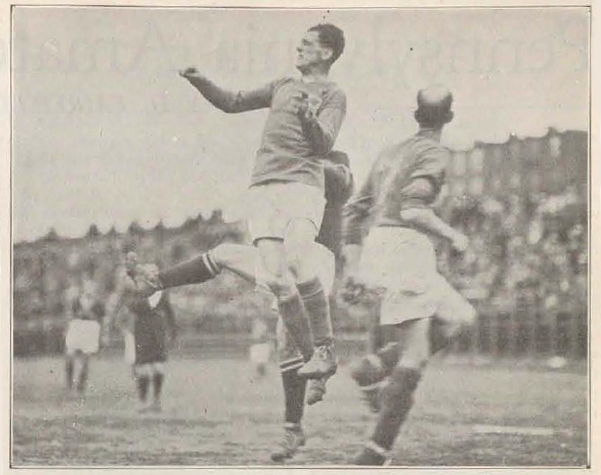
Ask Americans what the “Soccer War” was and their response may have to do with the 1969 war between El Salvador and Honduras. It’s not likely that they’ll mention the 1928-29 struggle between the U.S. Football Association and the American Soccer League over control of the sport in this country, but that one is the original holder of the name.
Although the issue over which those two organizations locked horns centered on participation by ASL teams in the National Challenge Cup (now called the U.S. Open Cup), the battle really was over the question of which of them was to be the controlling organization of soccer in the United States.
The ASL had been upset for several years by the schedule difficulties the National Challenge Cup caused, and had boycotted the 1924-25 event. Then, in 1927, the United States got into hot water with FIFA over the signing by ASL teams of players who were under contract to European teams. USFA president Andrew M. Brown made an emergency trip to the 1927 FIFA Congress in Finland and fended off moves to penalize the United States, but the USFA’s bowing to foreign authority inspired in some ASL owners a desire to free themselves from the limitations imposed on them by the USFA and FIFA’s European leaders. This was particularly true of New York Nationals owner Charles Stoneham, who also owned the New York Giants baseball team and wanted to see American soccer run more like baseball was (and without European interference).
In the summer of 1928, Stoneham proposed a series of moves to other ASL owners, the main one of which was that the ASL remove its teams from the National Challenge Cup. The ASL was an East Coast league, and among the other things Stoneham proposed was that within a few years a midwestern division of the ASL be founded, and that a final between the winners of the two divisions replace the National Challenge Cup as the true championship of American soccer.
The ASL accepted Stoneham’s proposals, and ordered that its teams be withdrawn from the cup. Three teams who had opposed the proposals, Bethlehem Steel, the New York Giants and the Newark Skeeters, refused to withdraw from the cup and were suspended from the league. This resulted in the league being suspended by the USFA, and the Soccer War was on.
During that 1928-29 season, the ASL played without those three teams, who joined several semipro New York teams in forming the Eastern Soccer League.
Support for the USFA from other national federations, plus the economic disadvantages the ASL faced as an outlaw league, eventually convinced the ASL that it couldn’t win this fight and should yield. The Soccer War was settled in early October 1929. The ASL, which had already begun its 1929-30 season, halted that season. The full league was put back together, and for that season played under the name of the Atlantic Coast League. The damage done to the ASL might have been temporary but for the fact that the end of one problem was quickly followed by the start of another. The stock-market crash that triggered the Depression occurred just two weeks after the settlement. The original ASL lasted only a few more seasons, and in 1933 it was replaced by a scaled-down, semipro version, with smaller budgets and no attempts to recruit European stars.
Whether the original ASL would have survived the Depression if the Soccer War hadn’t happened is uncertain. Perhaps some money that might have been invested in American soccer was scared away by the infighting within the sport that the Soccer War epitomized, but by the early 1930s, there wasn’t much money around anyway. As for the USFA, since renamed the U.S. Soccer Federation, this was not the last time that it has faced a challenge to its authority over American soccer.
A version of this article originally appeared on Roger’s Big Soccer blog on October 25, 2010.

Pingback: Another soccer war? – Society for American Soccer History
Pingback: Who controls American soccer? MLS-U.S. Open Cup saga reveals shifting power
Pingback: MLS-U.S. Open Cup spat begs a provocative question: Who controls U.S. soccer? - Yahoo Sports - Newshive: Uncovering the Latest Stories and Breaking News.
Pingback: La disputa entre la MLS y la Copa Abierta de Estados Unidos plantea una pregunta provocativa: ¿Quién controla el fútbol estadounidense?
Pingback: MLS-U.S. Open Cup spat begs a provocative question: Who controls U.S. soccer? – Yahoo Sports – News Release
Pingback: Le spt MLS-US Open Cup pose une question provocatrice : qui domine le football américain ? - high-proteinfood.com